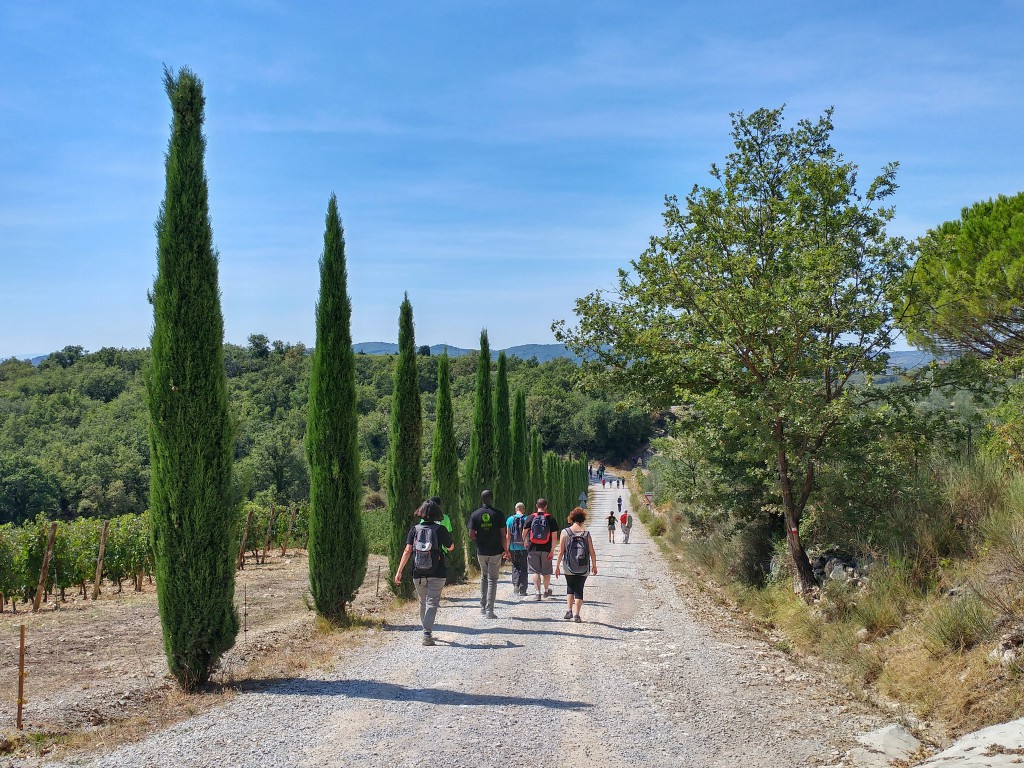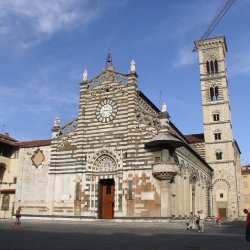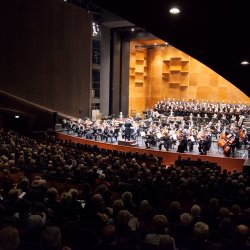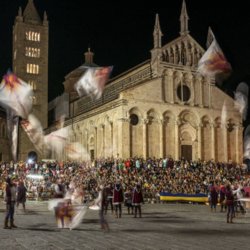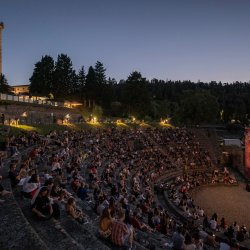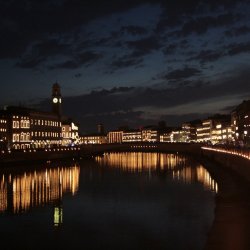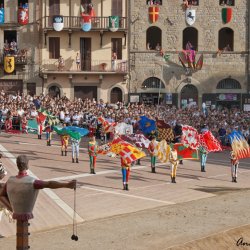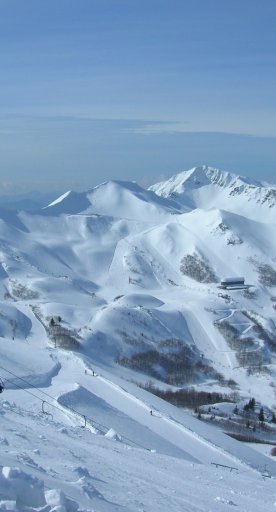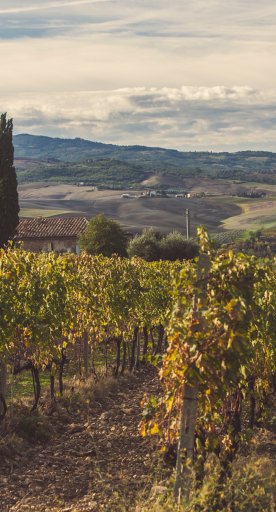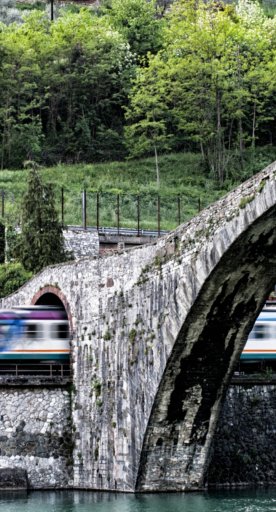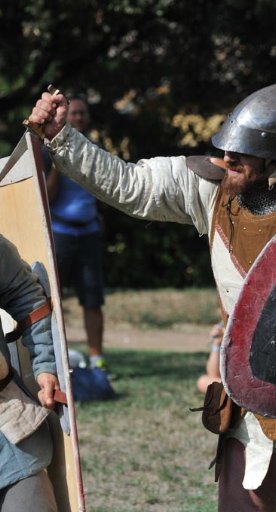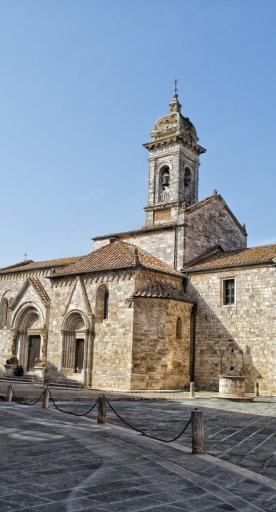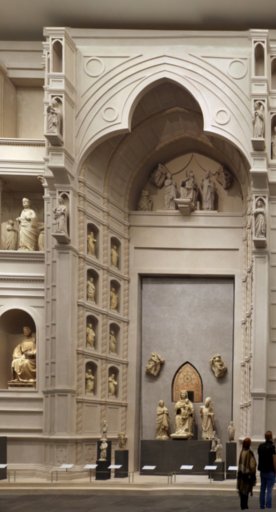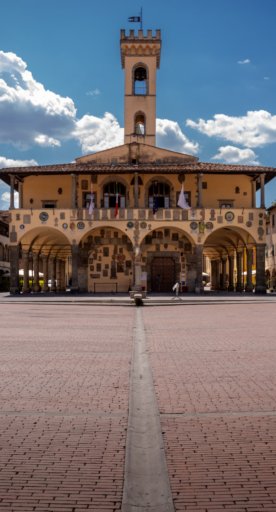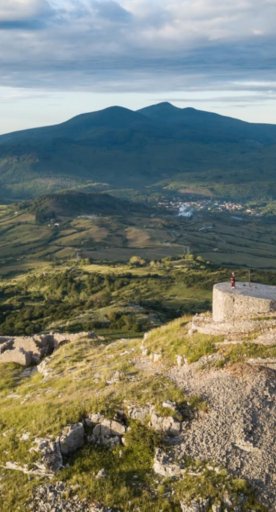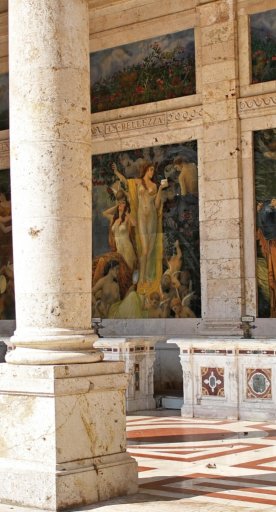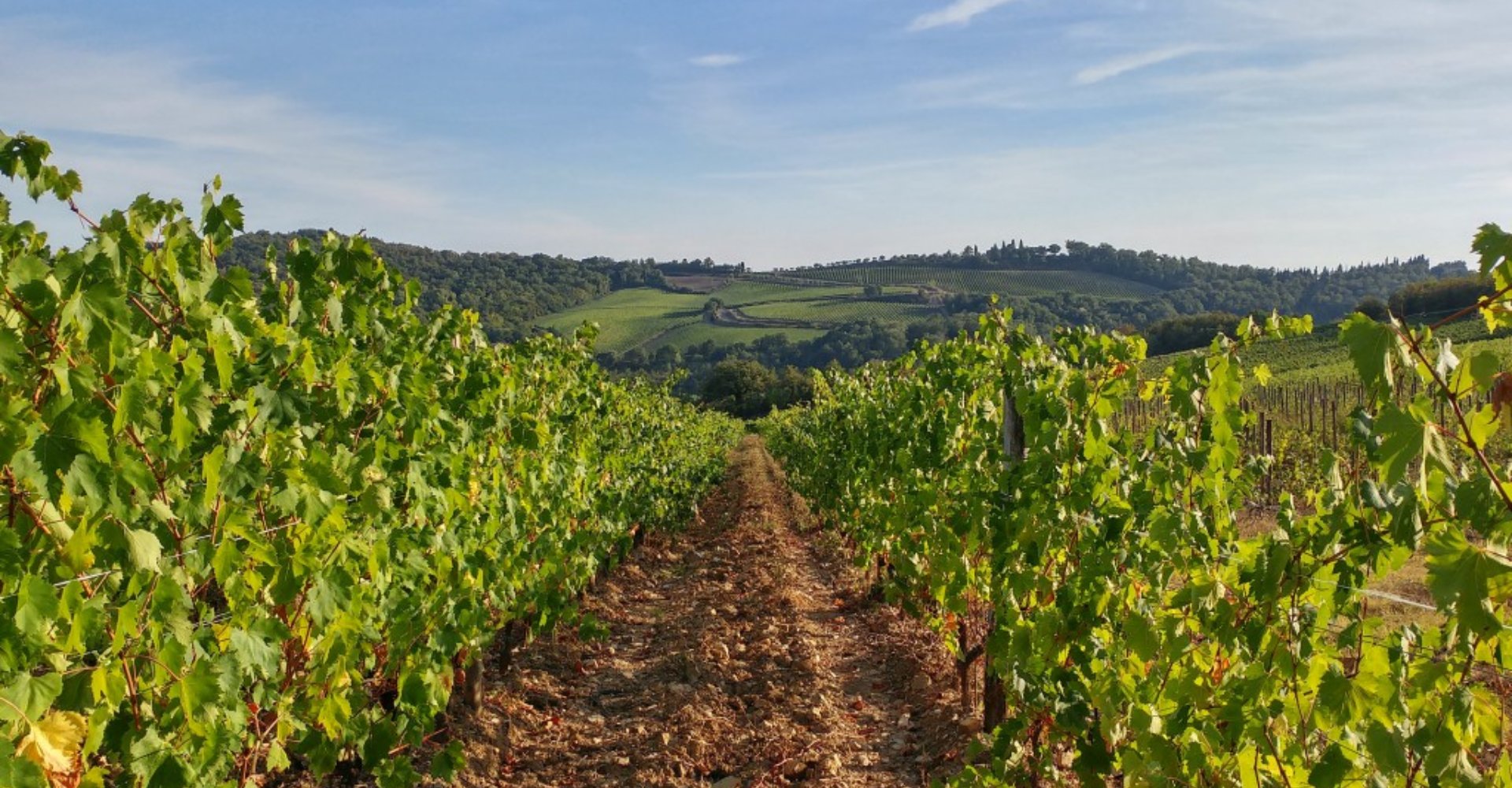
Entdecken Sie Gaiole in Chianti
Hier finden Sie einige Tipps, was Sie in Gaiole in Chianti und seiner Umgebung besichtigen, tun und ausprobieren können
Sanft geschwungene Hügel, über die sich Weinberge erstrecken, Burgen und reizvolle Ortschaften sind einige der verlockenden Destinationen, die Sie im Chianti-Gebiet der Toskana erwarten.
Hier finden Sie einige Tipps, was Sie in Gaiole in Chianti und seiner Umgebung besichtigen, tun und ausprobieren können.
-
1.Burgen
-
2.Essen, Wein und Geschichte
-
3.Ortschaften
-
4.Sport und Outdoor-Aktivitäten
Burgen
Gaiole in Chianti, das inmitten des Chianti-Gebiet liegt, ist die Heimat zahlreicher, gut erhaltener Burgen. Sie können zwischen fünf verschiedenen Strecken wählen, um alle zu entdecken. Heutzutage sind einige von ihnen Weingüter, Veranstaltungsorte oder Hochzeitslocations. Die meisten sind für die Öffentlichkeit zugänglich. Wir stimmen Sie schon einmal ein.
- Die Brolio-Burg oder „Castello di Brolio“ gehörte seit 1141 der einflussreichen Ricasoli-Familie. Von diesem Zeitpunkt an stand das Landgut in einem Zusammenhang mit der Weinproduktion und gilt daher als das älteste Weingut Italiens.
Heutzutage wird hier der Chianti Classico in großem Stil produziert. Die Ricasoli-Barone bewohnen weiterhin die Burg, aber Sie können den Garten und das Museum besichtigen, und Weinproben und Führungen genießen. Erfahren Sie hier mehr darüber. - Auch die Geschichte des „Castello di Cacchiano“ ist mit der Ricasoli-Familie verbunden. Der Komplex, der auf das frühe Jahr 1000 zurückgeht, hat seine Funktion als Fort bis ins 16. Jahrhundert beibehalten, als dieses in eine Villa und ein Landgut umgewandelt wurde.
Heutzutage bietet die Burg ihren Besuchern nicht nur eine Vielzahl von Produkten, von verschiedenen Chianto-Classico-Sorten bis zu ausgezeichnetem Olivenöl, sondern auch Unterkünfte. Erfahren Sie mehr auf der Webseite des Castello di Cacchiano.
- Auch die ältesten Abschnitte des imposanten „Castello di Meleto“ gehen auf das Jahr 1000 zurück. Die Burg gehörte zuerst Benediktinermönchen und ging dann im 13. Jahrhundert in den Besitz der Ricasoli-Familie über (die Ricasoli waren eine mächtige Familie).
1968 erwarb die Viticola Toscana Spa, die auf die Produktion des Chianti Classico DOCG spezialisiert ist, den Besitz. Auf der Meleto-Burg werden Führungen im wichtigsten Geschoss, in dem kleinen Theater und in den Kellerräumen organisert. Die Burg dient auch als Austragungsort von Veranstaltungen und Hochzeiten. Weitere Informationen erhalten Sie auf der offiziellen Webseite des Castello di Meleto. - Das Castello di Monteluco beherrscht die Ortschaft Lecchi, die ein paar Kilometer südlich von Gaiole in Chianti liegt. Im Gegensatz zu den oben genannten Burganlagen diente das Castello di Monteluco stets als Soldatenstützpunkt und wurde niemals in ein Landgut umgewandelt. Die Burganlage wurde kürzlich saniert und in private Herrensitze unterteilt, wobei das ursprüngliche Erscheinungsbild intakt blieb. Der massive Turm, der der Verteidigung der ungeschützteren Burgseite diente, der „Nibbio“, ist ein autonomes Apartment, das Unterkunft bietet. Hier finden Sie den Link zur Webseite der Monteluco-Burg.
- Auf einem Hügel ein Stück südlich der Badia a Coltibuono liegen die Ruinen der Montegrossi-Burg, die ein bedeutendes Bollwerk im Mittelalter war. Etwas zum Schmunzeln: Die Burg hielt im Laufe der Jahrhunderte starken Angriffen stand, konnte sich aber nicht dem im Jahr 1530 von der Armee Karls V. unternommenen Ansturm widersetzen. Die Burg wurde leider zersört und ist seitdem dem Verfall preisgegeben.
Castle of Meleto
The imposing “Castello di Meleto” as well, in its oldest parts, dates back to the year 1000. It belonged to Benedictine monks and then to the Ricasoli family, who took possession of the castle in 1200 (we did tell you they were a powerful family, didn’t we?).
Since 1968, the Viticola Toscana Spa, a farm specialized in production of Chianti Classico DOCG, bought the property. The Castle of Meleto organizes guided tours of the castle’s main floor and its small theatre and cellars. It also hosts events and weddings. More info on the official website of the Castle of Meleto.
Monteluco Castle
The Castello di Monteluco overlooks the village of Lecchi, a few kilometres south of Gaiole in Chianti. In contrast to the complexes we mentioned above, the castle always served its original purpose as a real outpost of soldiers and was never turned into a manor house. The complex was recently renovated and divided in private stately homes, but the original appearance remained intact. You also should know that the massive tower defending the weaker side of the castle, the “Nibbio”, is an independent apartment offering accommodation. Here’s the link to the Monteluco Castle website.
Montegrossi castle
Atop a hill a little further south of Badia a Coltibuono stand the ruins of Montegrossi castle, an important bulwark of defense back in medieval times. Fun fact: the complex withstood repeated fierce attacks throughout the centuries, but couldn’t do anything to resist the assaults undertaken in 1530 by the army of Charles V. The castle was unfortunately destroyed and, since then, the ruins have been abandoned.
Castle of Meleto
The imposing “Castello di Meleto” as well, in its oldest parts, dates back to the year 1000. It belonged to Benedictine monks and then to the Ricasoli family, who took possession of the castle in 1200 (we did tell you they were a powerful family, didn’t we?).
Since 1968, the Viticola Toscana Spa, a farm specialized in production of Chianti Classico DOCG, bought the property. The Castle of Meleto organizes guided tours of the castle’s main floor and its small theatre and cellars. It also hosts events and weddings. More info on the official website of the Castle of Meleto.
Monteluco Castle
The Castello di Monteluco overlooks the village of Lecchi, a few kilometres south of Gaiole in Chianti. In contrast to the complexes we mentioned above, the castle always served its original purpose as a real outpost of soldiers and was never turned into a manor house. The complex was recently renovated and divided in private stately homes, but the original appearance remained intact. You also should know that the massive tower defending the weaker side of the castle, the “Nibbio”, is an independent apartment offering accommodation. Here’s the link to the Monteluco Castle website.
Montegrossi castle
Atop a hill a little further south of Badia a Coltibuono stand the ruins of Montegrossi castle, an important bulwark of defense back in medieval times. Fun fact: the complex withstood repeated fierce attacks throughout the centuries, but couldn’t do anything to resist the assaults undertaken in 1530 by the army of Charles V. The castle was unfortunately destroyed and, since then, the ruins have been abandoned.
Castle of Meleto
The imposing “Castello di Meleto” as well, in its oldest parts, dates back to the year 1000. It belonged to Benedictine monks and then to the Ricasoli family, who took possession of the castle in 1200 (we did tell you they were a powerful family, didn’t we?).
Since 1968, the Viticola Toscana Spa, a farm specialized in production of Chianti Classico DOCG, bought the property. The Castle of Meleto organizes guided tours of the castle’s main floor and its small theatre and cellars. It also hosts events and weddings. More info on the official website of the Castle of Meleto.
Monteluco Castle
The Castello di Monteluco overlooks the village of Lecchi, a few kilometres south of Gaiole in Chianti. In contrast to the complexes we mentioned above, the castle always served its original purpose as a real outpost of soldiers and was never turned into a manor house. The complex was recently renovated and divided in private stately homes, but the original appearance remained intact. You also should know that the massive tower defending the weaker side of the castle, the “Nibbio”, is an independent apartment offering accommodation. Here’s the link to the Monteluco Castle website.
Montegrossi castle
Atop a hill a little further south of Badia a Coltibuono stand the ruins of Montegrossi castle, an important bulwark of defense back in medieval times. Fun fact: the complex withstood repeated fierce attacks throughout the centuries, but couldn’t do anything to resist the assaults undertaken in 1530 by the army of Charles V. The castle was unfortunately destroyed and, since then, the ruins have been abandoned.
Essen, Wein und Geschichte
Im Zusammenhang mit den Burgen haben wir Ihnen bereits einige Empfehlungen für Essen & Wein gegeben. Im Folgenden fügen wir unserer Liste mit den besten Tipps für Essen & Wein noch einige Namen hinzu.
- „Badia“ bedeutet im Italienischen Abtei: documented evidence traces Die Geschichte der Badia a Coltibuono geht nachweislich auf das Jahr 1037 zurück, als eine kleine Kirche in eine Klosteranlage ungewandelt und den Vallombrosanermönchen anvertraut wurde. Im frühen 19. Jahrhundert mussten die Mönche unter napoleonischer Herrschaft das Kloster verlassen, das in einer Auktion verkauft wurde.
Heutzutage ist die ehemalige Klosteranlage ein bekanntes Weingut, das die Weine DOCG und IGT Chianti Classico produziert, und auch Unterkünfte anbietet. Besuchen Sie die offizielle Webseite. - Das prämierte Weingut Castello di Ama wurde in den 1960er-Jahren in Ama gegründet, einer kleinen Ortschaft inmitten der Hügel südlich von Gaiole. Das Weingut erstreckt sich über 250 Hektar. 90 Hektar werden von Weinbergen (vorwiegend Sangiovese) und 40 Hektar von Olivehainen eingenommen.
�Between one castle and another, we already gave you some food & wine related tips, that’s (luckily) how it works when dealing with the Chianti area (and Tuscany itself)! Let’s add a few more names to the must-taste list.
Badia a Coltibuono
As you may already know “badia”, in italian, stands for an old abbey: documented evidence traces the history of Badia a Coltibuono back to the year 1037, when a small church was transformed into a monastery complex and entrusted to Vallombrosan monks. In the early XIX, under Napoleonic rule, the monks were forced to leave and the abbey was sold at auction.
Nowadays, the complex is a renowned wine estate producing DOCG and IGT Chianti Classico wines and also offers accommodation. Have a look at the official website.
Castello di Ama
The top-rated Castello di Ama winery was founded in the 1960s in Ama, a small hamlet nestled in the gentle hills south of Gaiole. The estate currently covers about 250 hectares, 90 of which are lined with vineyards (mostly Sangiovese, of course) and 40 of which are covered in olive oil trees.
Ortschaften
Wenn Sie im Gebiet von Gaiole in Chianti verweilen, empfiehlt sich der Besuch der typisch toskanischen Ortschaften Vertine, Barbischio und Lecchi, die alle drei auf das 11. Jahrhundert zurückgehen.
- Vertine ist ein ummauerter Ort, in dem sich die meisten ursprünglichen Gebäude und Festungsbauten erhalten haben, darunter der schöne Turm aus Kalkstein, der unweit des Tores und der Pfarrkirche San Bartolomeo liegt.
- Sehenswert in Barbischio sind der Turm, der den Ort (die Überreste einer Burg) beherrscht, die Pfarrkirche San Jacopo und der „Molino di Barbischio”, ein mittelalterlicher Häuserkomplex.
- In Lecchi in Chianti befinden sich das bereits erwähnte Castello di Monteluco und die Abtei San Michele.
When in the area of Gaiole in Chianti, also consider paying a visit to the quintessentially Tuscan villages of Vertine, Barbischio and Lecchi, all three of them dating back to the XI century. Vertine is an oval-shaped walled hamlet, which still cherishes most of its original buildings and fortifications: to mention a few, the beautiful limestone tower standing next to the gate and the Parish church of St. Bartholomew.
Must sees in Barbischio are the tower overlooking the village (the remains of an ancient castle), the parish church dedicated to St. James and the “Molino di Barbischio”, a medieval housing complex. Lastly, Lecchi in Chianti stars, among other things, the Castello di Monteluco we mentioned above and the abbey of San Michele.
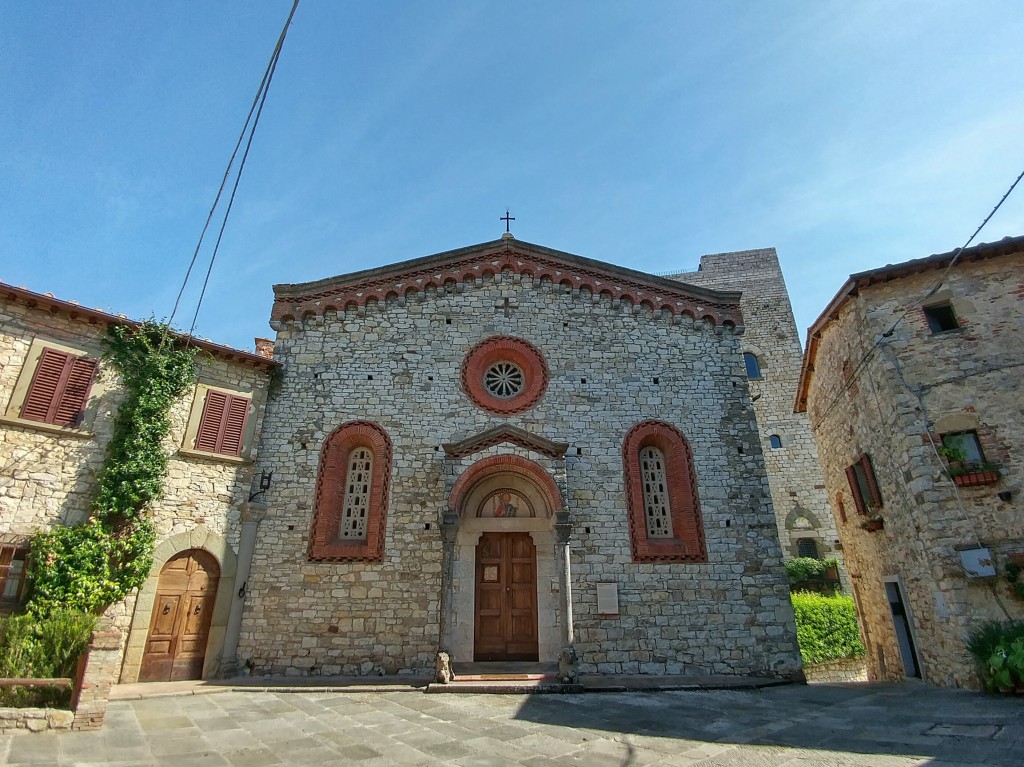
Sport und Outdoor-Aktivitäten
Seit 1997 findet in Gaiole in Chianti jedes Jahr am ersten Sonntag „L’Eroica“ statt, ein einmaliges Radrennen, das nur auf den Schotterstraßen des Chianti, Valdarbia und Val d’Orcia statt, wobei nur Vintage-Räder, die auf das Jahr 1987 zurückgehen oder noch älter sind, zugelassen werden. Wenn Sie bei Eroica nicht teilnehmen können, können Sie dennoch Ihr Können unter Beweis stellen und die permamente Strecke, die 209 Kilometerlang ist, zurücklegen. Erfahren Sie mehr in unserem Post „L’Eroica: Das toskanische Retro-Radrennen ist zurück!“.
Sie können das Gebiet von Gaiole in Chianti auch zu Fuß erkunden (oder mit dem Fahrrad). Das umfangreiche Wanderwegnetz wurde kürzlich instandgesetzt und neu ausgeschildert. Sie können zwischen 15 verschiedenen Strecken wählen, entlang derer Sie Burgen, Ortschaften, Weinberge und die Umgebung von Gaiole erkunden können. Wir empfehlen Ihnen auch, den 36 Kilometer langen „Sentiero Oxfam“ zurückzulegen, einen Wanderweg, der von der weltweit bekannten NRO gesponsert wurde. Klicken Sie hier, um die Wanderwegkarten herunterzuladen.
Erfahren Sie mehr über Gaiole in Chianti auf Toscana Ovunque Bella, hier.
